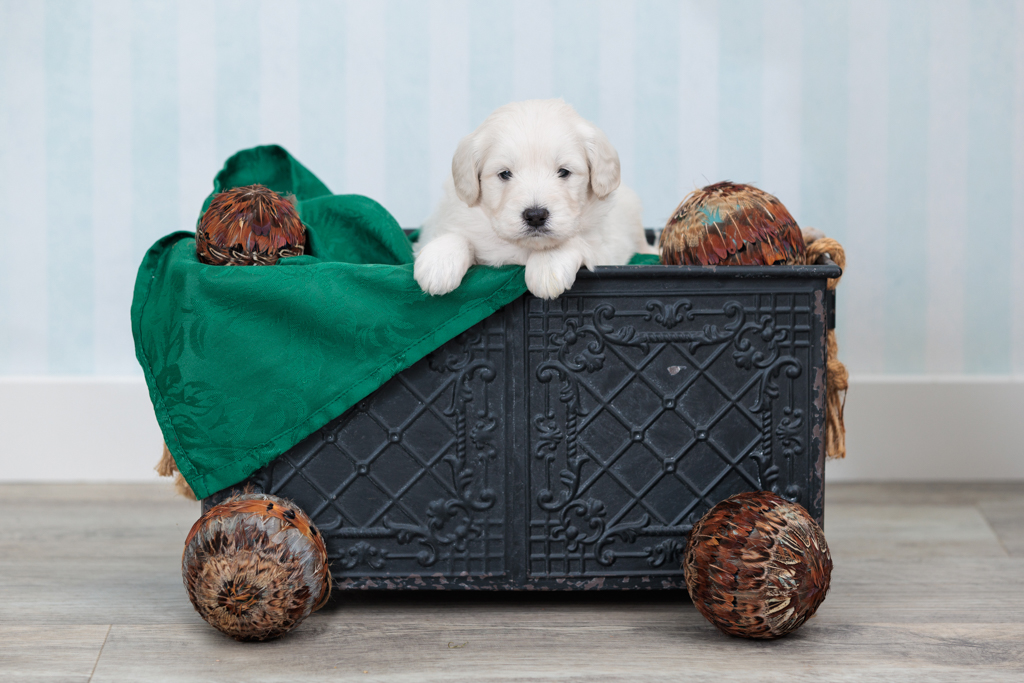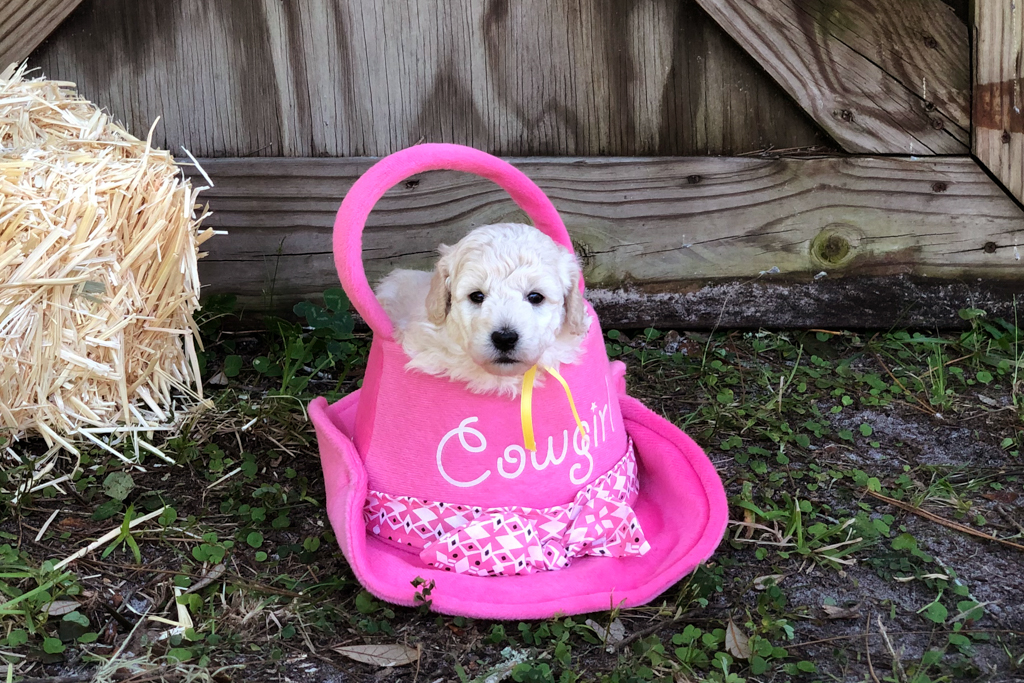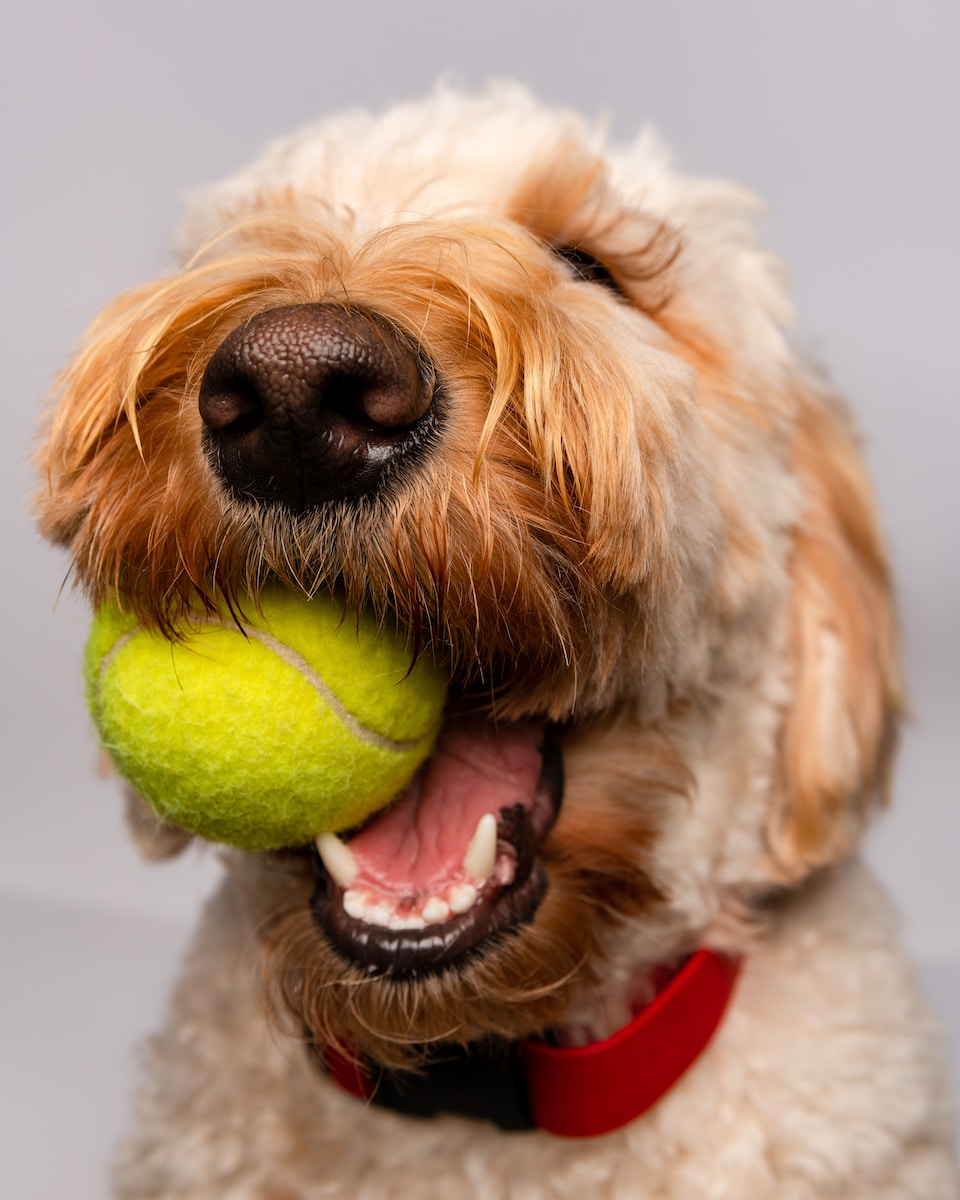The English Cream Minidoodle is a designer breed gaining popularity over the past few years. This breed is a cross between a Miniature Poodle and an English Golden Retriever, resulting in a small, hypoallergenic dog with a friendly and loyal personality. The English Cream Minidoodle is an excellent family pet due to its affectionate nature and adaptability to different living situations. In this article, we will provide a comprehensive guide to understanding the characteristics and personality of the English Cream Minidoodle.
Physical Characteristics
1. Size and Build
Small dogs typically weigh between 15 to 35 pounds and stand about 12 to 16 inches tall. Their sturdy and muscular build makes them ideal for families with children.
2. Coat Color and Texture
The coat of an English Cream Minidoodle is usually cream or white in color, which is where the breed gets its name. They have a hypoallergenic wavy or curly coat texture, making them a great choice for people with allergies.
3. Eyes
English Cream Minidoodles have round, dark eyes that are set evenly apart. They are expressive and give the breed an endearing and intelligent appearance.
4. Ears
The breed has long, droopy ears on either side of its head. Their ears are covered in soft fur, adding to their adorable appearance.
5. Tail
They have a thick and fluffy tail that is usually carried high. Their tail adds to their overall balance and muscular appearance.
Temperament and Personality
They are known for their friendly, outgoing, and affectionate temperament. They are highly social and thrive on human companionship. They are also intelligent, easy to train, and eager to please. This breed is known for being gentle and patient with children, making them excellent family pets. Their personality is often described as playful, curious, and loyal, making them a great addition to any household. They are also hypoallergenic, making them a perfect choice for families with allergies.
Training and Exercise Needs
To keep English Cream Minidoodles healthy and content, it is essential to provide them with regular exercise and training. Being an active and intelligent breed, they enjoy running, playing, and exploring, which is why daily walks and outdoor activities are crucial. Since they are highly social dogs, regular socialization with other dogs and people is also beneficial. Proper training is necessary for English Cream Minidoodles because they can be stubborn and independent. Using positive reinforcement methods is recommended to encourage good behavior. Basic obedience training and agility exercises keep them mentally stimulated and physically fit.
Grooming Needs
English Cream Minidoodles are a hybrid breed that requires regular grooming to maintain their luxurious and fluffy coat. They have a thick and silky coat that sheds minimally, making them an ideal choice for people with allergies. Brushing their coat at least once a week is necessary to prevent matting and remove loose hair. They also require occasional trimming around the face, paws, and bottom to keep them clean and prevent discomfort. Bathing should be done on a monthly basis with a mild shampoo.
Health Issues
They risk developing hip dysplasia, a condition where the hip joint doesn’t develop properly, leading to discomfort and pain. They can also suffer from eye problems, such as cataracts and progressive retinal atrophy, eventually leading to blindness. Additionally, they may develop allergies, skin problems, or ear infections if not given proper care and attention. Maintaining their health is important by providing them with a balanced diet, regular exercise, and visits to the vet.
Feeding and Nutrition
Proper feeding and nutrition play a vital role in maintaining the health and happiness of English Cream Minidoodles. To ensure optimal health, it is crucial to provide them with high-quality dog food that is specifically formulated for their age and size. Fresh water should always be accessible, and their food bowl should be cleaned frequently to prevent contamination. One should be cautious while giving treats, as overfeeding can cause obesity and other health problems. Providing them with a well-balanced diet that includes essential vitamins and minerals that support their overall health and well-being is also important.
Friendliness and Loyalty
They are social dogs that form strong bonds with their family and are always eager to please. They love attention and enjoy spending time with their owners. They are affectionate dogs that will follow their owners from room to room, always wanting to be close to them. As a loyal breed, they are protective of their family and will alert their owners to any potential danger. They are also known for their gentle and patient demeanor, making them great companions for children.
Intelligence and Trainability
They are quick learners and enjoy mental stimulation. They are easy to train, especially when using positive reinforcement methods such as treats and praise. They are also highly adaptable and can learn new tasks quickly. Their intelligence makes them excellent service and therapy dogs. They are known for their obedience and can learn various tricks and commands. Consistent training is important to keep them mentally stimulated and prevent any negative behaviors from developing.
Affection and Attention
The affectionate nature of English Cream Minidoodles is well-known. They adore companionship and relish being around their family. Being highly social, they develop strong bonds with their owners and are always willing to please them. They frequently express their affection by cuddling and showering their owners with kisses. Moreover, their gentle and patient personality makes them perfect companions for children. Their loving temperament adds to their popularity, and they are fondly referred to as “velcro dogs” since they prefer to be in close proximity to their owners.
Final Thoughts
English Cream Minidoodles is a hybrid breed that possesses a range of desirable characteristics and personality traits. They are affectionate, loyal, and friendly dogs that form strong bonds with their owners and are always eager to please. They are highly intelligent and trainable, making them great service and therapy dogs. They have luxurious and fluffy coat that requires regular grooming, and they are prone to certain health issues that can be prevented with proper care and attention. Overall, English Cream Minidoodles is a beloved breed amongst dog lovers, and their desirable characteristics make them a great choice for families looking for a loyal and affectionate companion.
If you’re looking for a loyal and affectionate companion, consider an English Cream Mini Goldendoodle from Royal Minidoodles. Our puppies are raised with love and care, and we strive to give them the best possible start in life. Reserve a puppy today!



